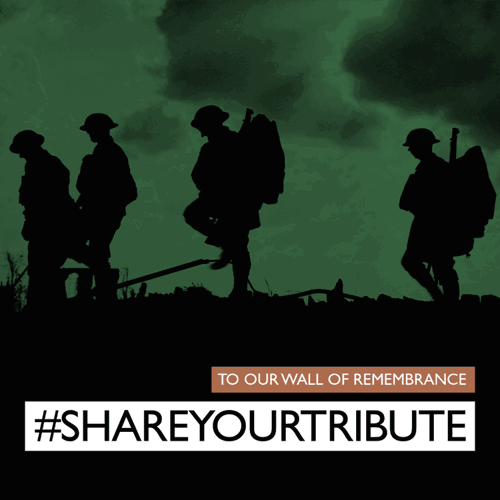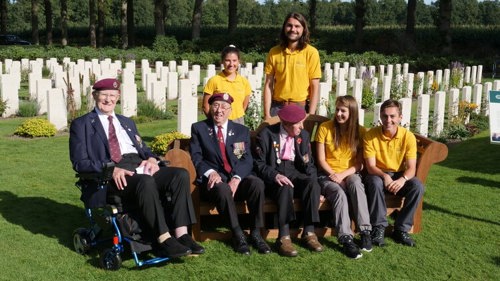10 July 2020
How technology helps us tell the story of the war dead
Advances in digital technology offer new ways to connect the next generation with the work of the CWGC and the individuals we commemorate. This time CWGC’s Digital Specialist, Emily Cecile-Pritchard, talks about how Commission is using technology in new and exciting ways.

As the world evolves to interact digitally across many different channels, media and boundaries; it is easy to think that historical events can fade into the background. The world is moving faster and information is being thrown at us from all directions. However, the digital revolution is helping CWGC to reach a wider and younger audience and the Commission is using technology to tell stories of those who gave their lives during the world wars in evermore diverse ways.
For many of the younger generations, direct connections to the wars and their impact is becoming less and less. The human stories are no longer readily available from a first-hand source, giving life to the battles and the loss. So, one of the key challenges for CWGC is how to engage this audience with emotive and inspiring content to keep the stories and memories alive.
 As an organisation, we have begun to explore many new options across the digital world, taking advantage of being able to reach more people than ever. One of our most popular initiatives is using cameras on smartphones or GoPros sent to staff to capture some of our most interesting and hard to reach cemeteries. These sites often have fascinating stories of personal sacrifice as well as their own challenges for our staff who maintain them. We’ve even started using 360 photospheres and VR headsets in order to bring these sites to people virtually in the most immersive way possible.
As an organisation, we have begun to explore many new options across the digital world, taking advantage of being able to reach more people than ever. One of our most popular initiatives is using cameras on smartphones or GoPros sent to staff to capture some of our most interesting and hard to reach cemeteries. These sites often have fascinating stories of personal sacrifice as well as their own challenges for our staff who maintain them. We’ve even started using 360 photospheres and VR headsets in order to bring these sites to people virtually in the most immersive way possible.
All of our sites are a rich source of historical and present-day stories but there’s another element which helps engage visitors at our larger sites, digital experiences. This is a new venture for the Commission and is being piloted at Runnymede Memorial with the hope to expand the technology to other sites in the future. The Runnymede experience takes you on a journey through the site while discovering the story of a brilliant and brave woman, Noor Inayat-Khan. Stories such as hers show the courage and extraordinary actions that sit behind each name on the memorial. This fun and educational experience gives a valuable tool to families, schools and individuals visiting Runnymede who want to understand more about the site whilst gaining a personal insight into Noor’s amazing life.
 It’s not just about us creating content though, we ask the public to help us keep memories alive by engaging in crowdsourcing projects on our website or via social media. Never has it been easier to collect photos, letters and stories of those we commemorate from their loved ones. This offers a unique opportunity to put faces to the names and allow others to connect with a story usual shared through the generations of a family. We also have captured voice recordings from Veterans so their memories can live on in their own words.
It’s not just about us creating content though, we ask the public to help us keep memories alive by engaging in crowdsourcing projects on our website or via social media. Never has it been easier to collect photos, letters and stories of those we commemorate from their loved ones. This offers a unique opportunity to put faces to the names and allow others to connect with a story usual shared through the generations of a family. We also have captured voice recordings from Veterans so their memories can live on in their own words.
The veteran voice recordings are full of the human emotion that no image or document can truly convey. They bring the world wars to younger generations with a passion and clarity that we hope will inspire them to take an active interest in the war dead and the tragic events that lead to their commemoration. We have used these voices not only on our website and through social media but in two interactive benches. These were placed at various sites throughout the Centenary and allowed visitors to sit overlooking the graves while listening to the poignant and emotional words of the veterans who were there.
As the digital world expands and more technology becomes available, so grows the opportunity for CWGC to share our work and the stories of those we commemorate across the globe. Digital mapping, further VR advancements and other tech will only enhance the work we do and the commemoration of all of those who gave their lives.

